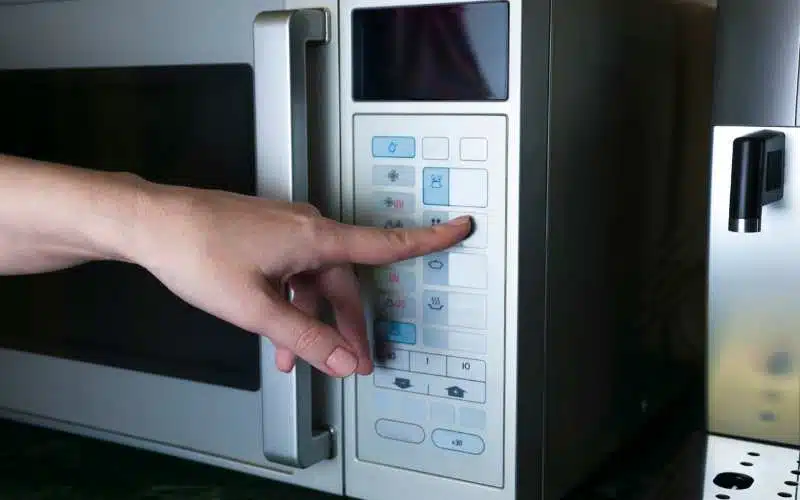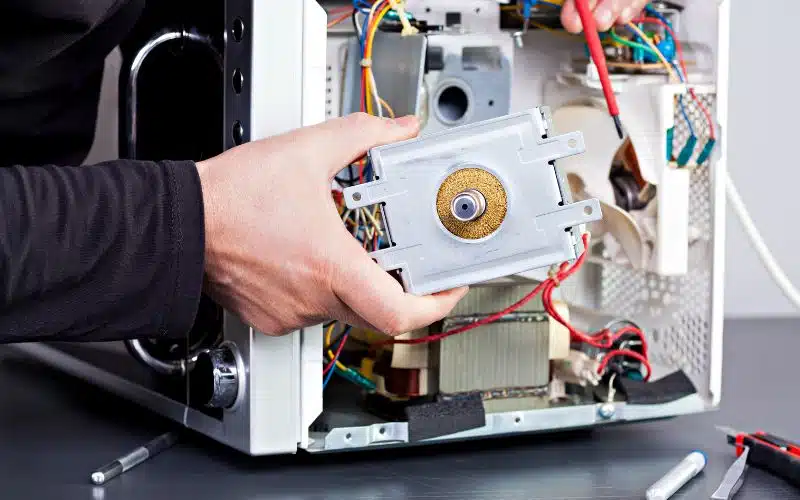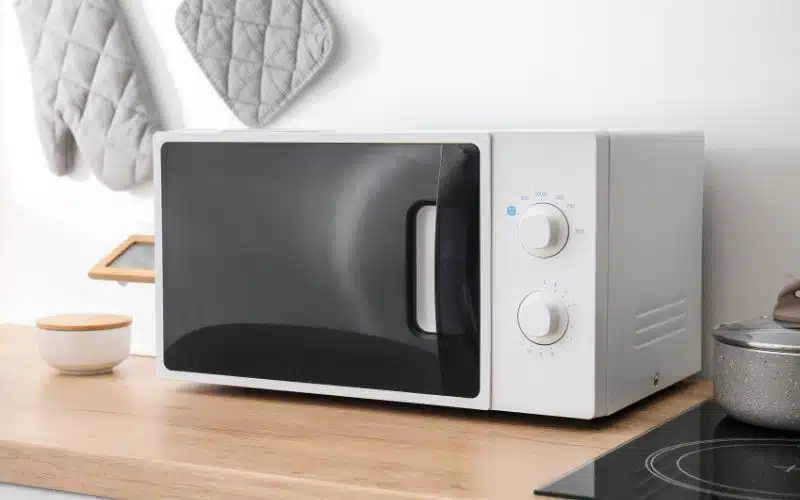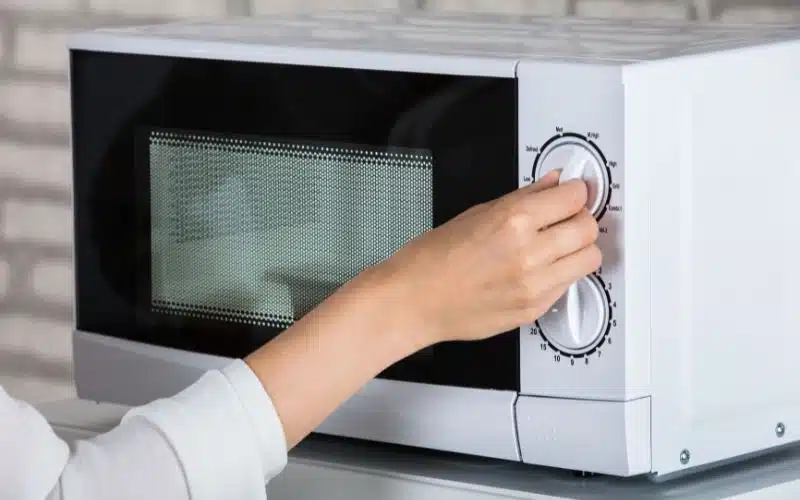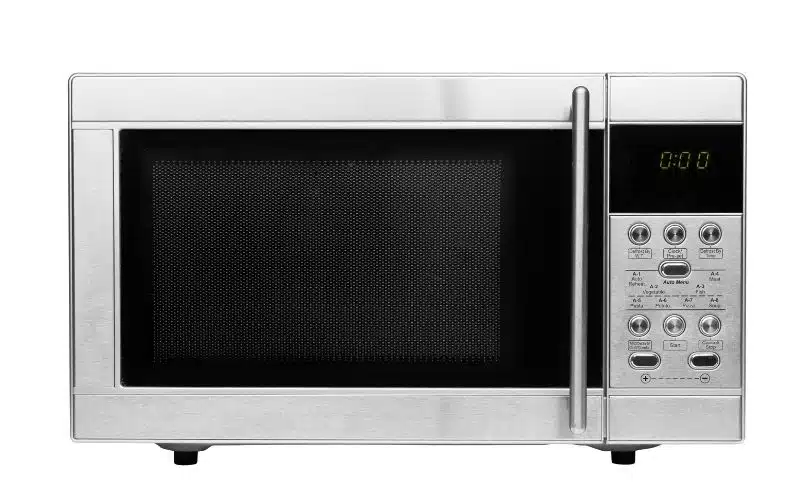Using plastic in the oven has been one of the most discussed topics amongst health practitioners, food bloggers, and cooks.
While some feel it is safe, others think it can be very hazardous to one’s health.
Foods you get outside like frozen lasagna are usually cooked in the oven before consumption. To cook frozen lasagna, you’re to microwave it or bake it in the oven at a certain temperature.
These foods come in plastic containers and plastic films, and you may want to know if it is safe to leave the plastic on them before placing them in the oven.
Most lasagna plastics are placed in the oven to cook. Brands like Stouffer instruct that you cook your Stouffer frozen lasagna in the oven with the plastic tray. Cook at a certain degree of temperature. However, that is not to say that all plastics are safe in the oven.
Do You Leave The Plastic On Lasagna?

To leave the plastic on your lasagna will depend on the brand’s instructions, the type of plastic in use, and your choice.
So to know if you’re to leave the plastic on lasagna, ensure to read the instructions given by the brand. And remember, you can also remove the plastic if you wish to.
Not all plastics are safe to go into the oven. Note that microwave-safe plastic is not the same as oven-safe plastic.
Plastics begin to melt at a low temperature of 212 degrees Fahrenheit, and they can’t withstand the oven’s heat.
However, Crystallized Polyethylene Terephthalate (CPET) is a type of plastic that can withstand heat to a higher degree.
The Crystallized Polyethylene Terephthalate (CPET) is made to go through crystallization, which increases its resistance to heat.
As a result, it is safer, more hygienic, and stronger. In addition, they’re food-safe plastic and also oven-safe.
Frozen lasagnas are packed with this kind of plastic, but as earlier stated, make sure you read the instructions on the pack to know how you cook the lasagna.
However, there’re preventive measures you can apply. For example, if you are to cook frozen lasagna with plastic on it, you need to preheat the oven to the standard temperature.
If the oven’s temperature reaches a degree above 400 Fahrenheit, the plastic may begin to melt and release toxins.
Also, covering with aluminum foil will help dissipate the heat properly and allow the plastic not to overheat.
Cooking your frozen lasagna with plastic on it has some advantages and disadvantages.
#1. Pros
- The plastic wrap prevents moisture from escaping
- It helps your lasagna cook evenly
- It helps your lasagna to get cooked properly.
#2. Cons
- The plastic could melt into the food
- When plastic melt, it releases toxins that can pose a risk to one’s health
- When plastic melt, it can also emit fumes which can lead to fire outbreak
- The plastic could melt, and when it solidifies, it would be not easy to clean
How Do You Bake Lasagna In The Oven?
To bake lasagna in the oven, you do not just place it in the oven and begin to cook. You should follow the right steps to ensure a well-cooked and tasty lasagna is the result.
You will need to cook for about 60 minutes. Depending on the oven used, you may need some additional minutes or even less.
Cooking time will be longer if the frozen lasagna is not thawed before placing it in the oven.
#1. Steps To Bake Frozen Lasagna In The Oven
- Preheat the oven to 375 degrees Fahrenheit. Some brands may instruct 350 degrees Fahrenheit
- Remove the lasagna from the pack. You may slit plastic film with a knife to vent.
- Place the tray on the baking sheet, center rack of the oven
- Cook for about 55 minutes.
- Uncover the lasagna and cook for 15 minutes until the top is slightly brown.
- Cook your lasagna until the inner temperature reaches 165-175 degrees Fahrenheit.
- You can use your thermometer to check the internal temperature of your lasagna.
#2. How To Bake Stouffer Lasagna In The Oven
To cook Stouffer lasagna in the oven, follow these steps:
- Preheat the oven to 400 degrees Fahrenheit
- Remove the tray from the pack and leave the plastic wrap. Don’t vent
- Place the tray on a baking sheet, center rack of the oven
- Cook for 55 minutes
- Remove the plastic cover completely and cook for another 5 minutes
- If Stouffer frozen lasagna has not been thawed, you will have to cook for a about 1 hour or more to allow for thawing
- Allow standing for 15 minutes before serving.
The steps to homemade baking lasagna are pretty the same as frozen lasagna. Ensure you don’t overcook your noodles. Using the right cheese is very important.
Also, using a conventional oven is better than using a traditional oven as there will be proper air circulation, and preheating is done faster.
Ensure you follow the conventional oven instructions. Always remember to read the instructions on your lasagna pack.
This step is very important as the brand’s cooking instructions slightly differ. You can pass a knife or fork in the lasagna to check if it is well cooked. If it passes smoothly, your lasagna is ready.
How To Use Oven For Lasagna?
To use your conventional oven, the first thing you should have in mind is following the conventional oven instructions. Note the following:
- Ensure you preheat your oven beforehand
- Never preheat beyond the required temperature degrees. The reason is that it can cause the plastic to melt. The oven’s temperature is usually 350-375 degrees Fahrenheit for lasagna to cook properly. But it should never exceed 400 degrees Fahrenheit
- Make sure you place the tray on a baking sheet on the center rack of the oven. Therefore, it will ensure equal distribution of heat.
- Do not open the oven door frequently. This action will allow air escape. Let your lasagna cook for at least 35 minutes before opening the door.
- Bake your lasagna till about 165 degrees Fahrenheit.
Can You Leave The Plastic Film In Oven?
Yes, you can leave the plastic film when cooking in the oven. Many brands will tell you to leave the plastic film when baking in the oven.
For example, to cook Stouffer lasagna, Stouffer instructs you to leave the plastic film on the lasagna and don’t vent.
Some other brands allow you to vent. You can slit your plastic film with a knife to allow for venting.
Covering with aluminum foil is another trick many have discovered while cooking with plastic. You do not need to remove the plastic film before covering it with the foil.
For example, covering your lasagna with aluminum foil helps with the following.
- It helps conserve moisture better, preventing it from escaping.
- It helps the lasagna cook within the required temperature
- It prevents your lasagna from drying
- It allows for even cooking.
Conclusion
Cooking with plastic is generally not advisable, but food-safe plastics are most times designed to go into the oven. For example, lasagnas are packaged with plastics that are oven-safe.
Cooking your lasagna with the right oven temperature is safer, but you will also get a properly cooked lasagna for you and your household. Never forget to follow conventional oven instructions.
